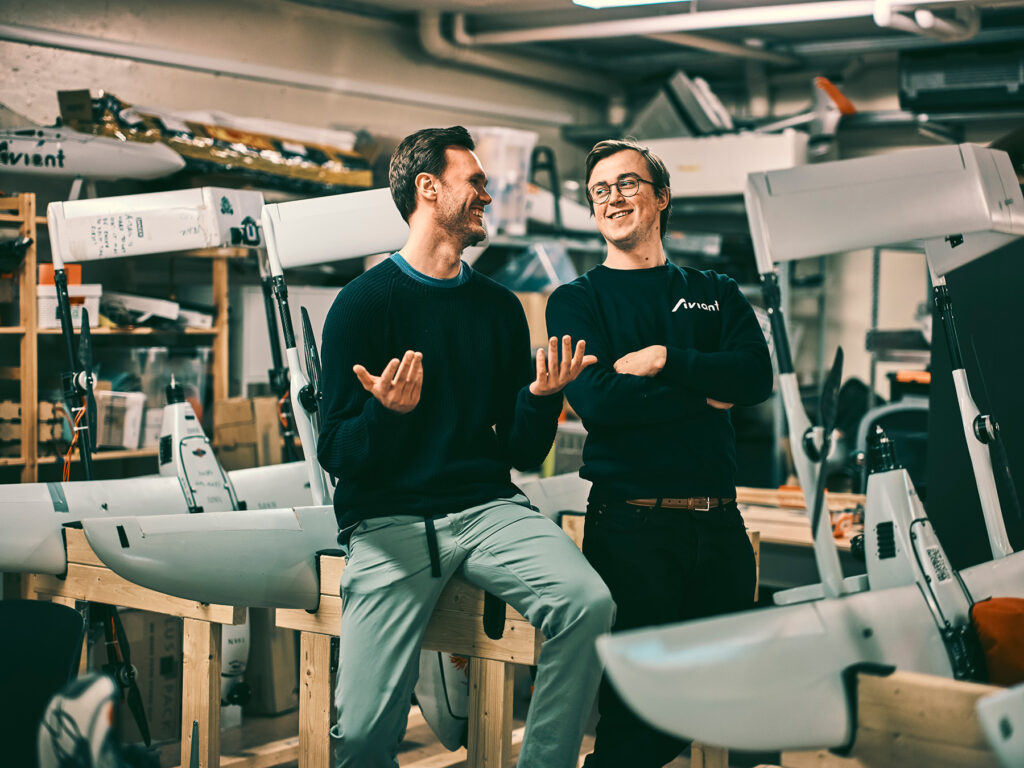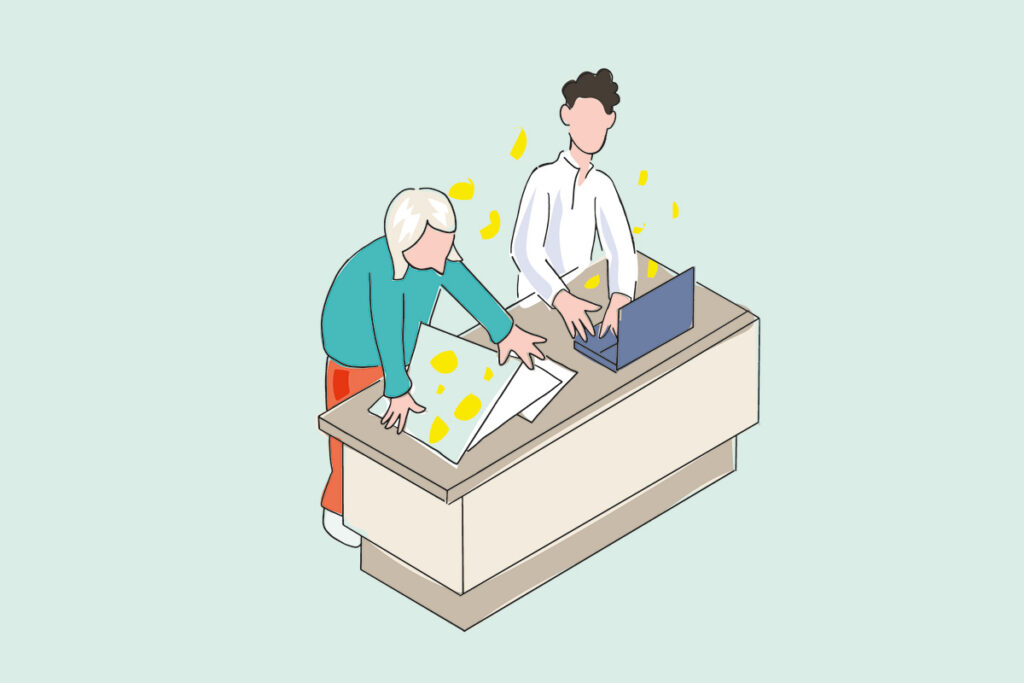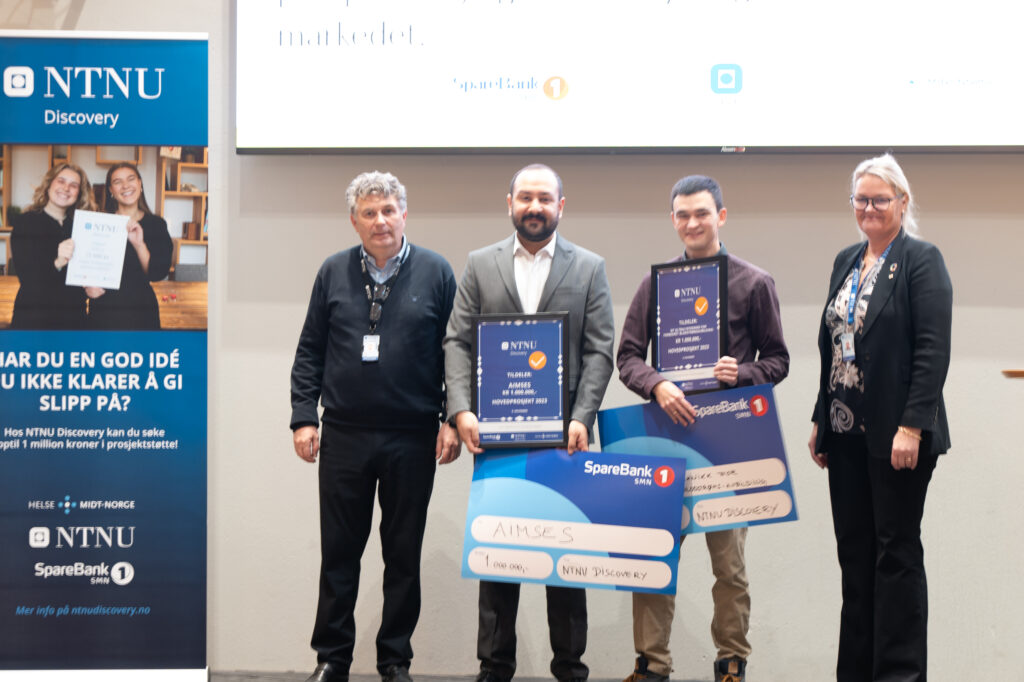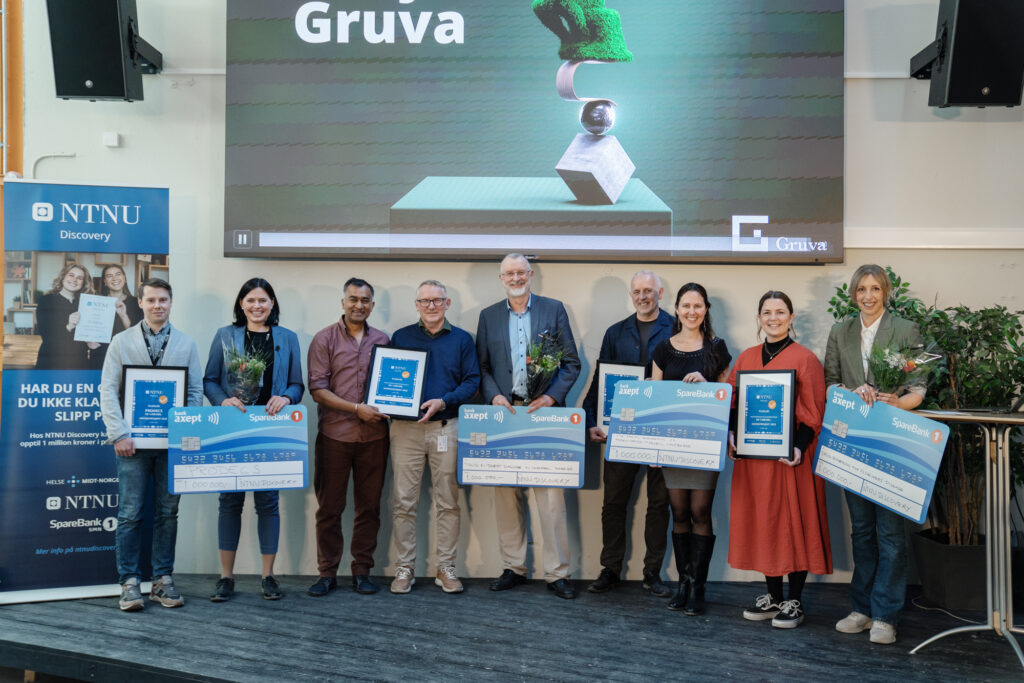New app maps the severity of injuries in accidents
Tekst: Anne-Lise Aakervik
Foto: Synlig.no v/Erik Børseth
First responders to the scene of an accident are often not health professionals. It might be you or me – the average bystander. Aside from administering first aid, the most important thing is to get a general outlay of the number of injured, and assess who is most severely injured. But do we know how, and do we dare?
.
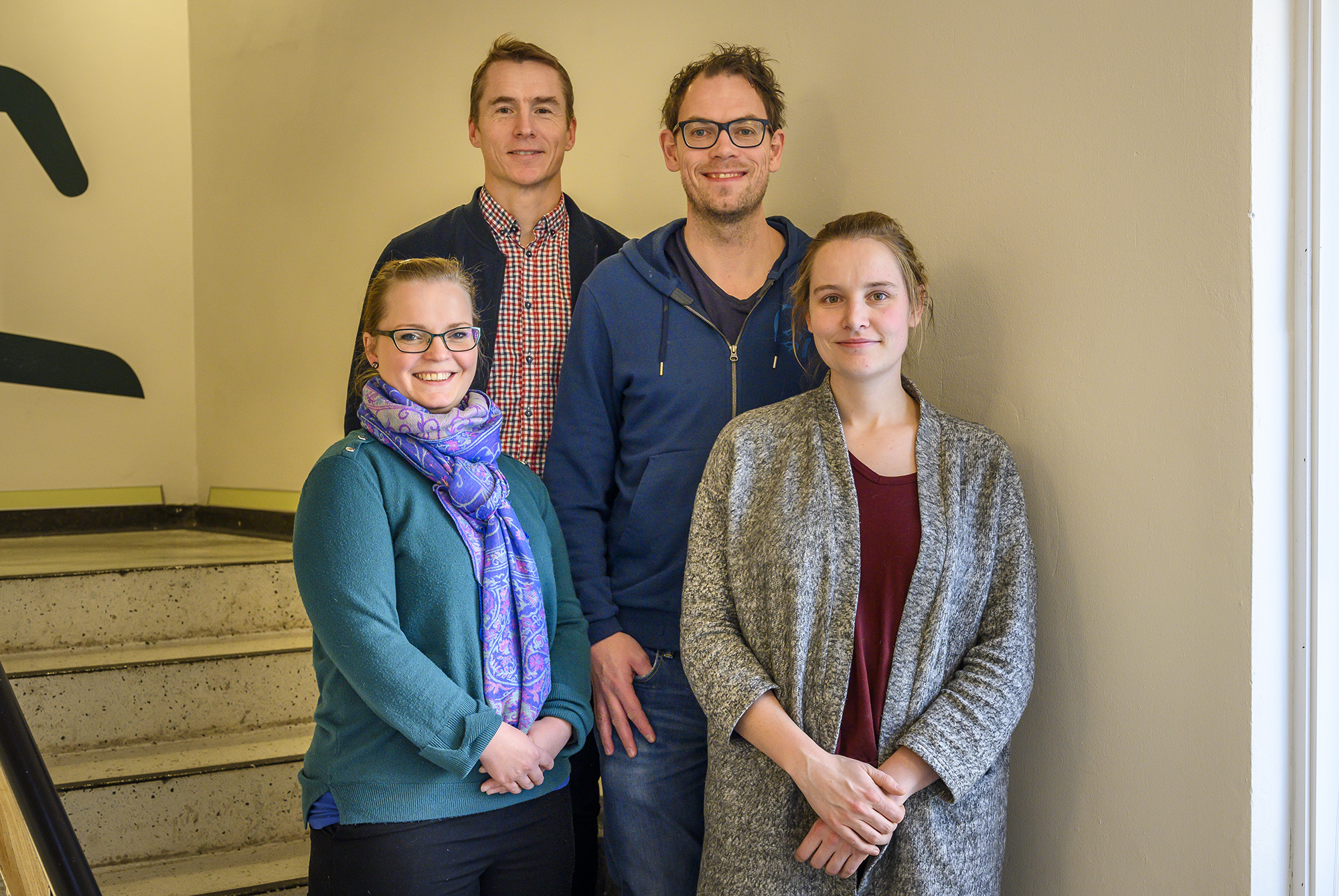
Hoping to aid first responders at the scene of an accident, this team has developed the INSTA patch – a patch that can monitor condition and give feedback. From left: Research fellow Anette Skjervold, with the Institute of Clinical and Molecular Medicine, Chief Resident Erlend Skraastad, physician Trond Nordseth and research fellow Rosalie Zwiggelaar of NTNU.
Unfortunately, it seems that stress, the burden of responsibility, fear of making mistakes and lack of training for these situations makes people shy away from such tasks, even though they may contribute to saving lives.
But consider this mental exercise: What if you could simply retrieve a small patch from the first aid kit, attach it to the chest of the injured, and turn on your mobile phone to get an account of their condition? That is, do they have open airways, do they breathe or not, and do they have satisfactory circulation? Would you be bolder then?
Physician Trond Nordseth believes so. As an anesthesiologist at Molde Hospital, and a member of the Emergency medicine specialist department at St. Olavs Hospital, he has experience with serious traffic accidents and other situations with personal injury. He is one of the initiators of the INSTA patch, which is of course the sensor technology patch that makes it possible to check and monitor the injured when the patch is attached to their chest.
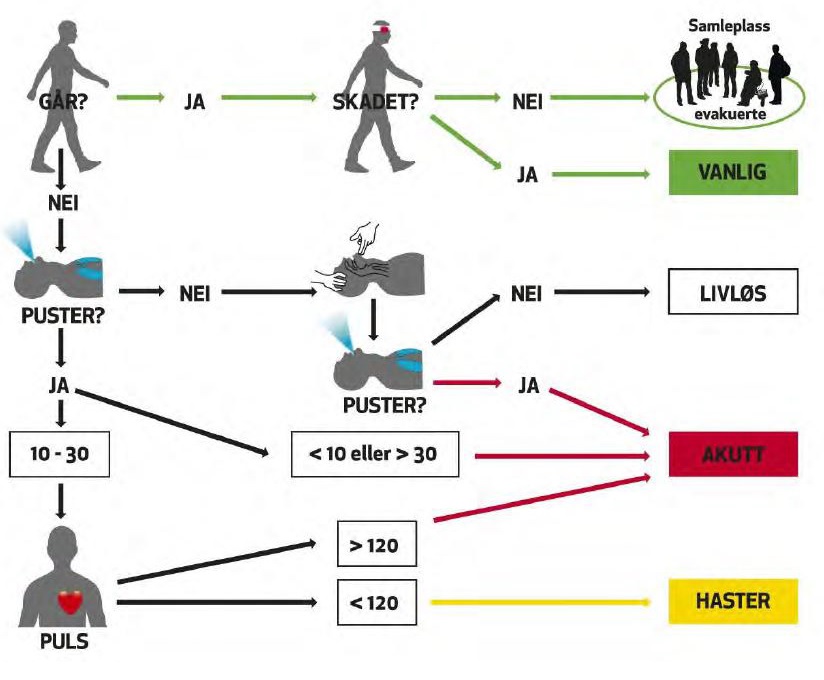
This is triage – a way to assess who is in most immediate need of help in e.g. an automobile accident.
Order in chaos
Triage is sorting patients by the degree of their injuries in accident situations with several injured. The patients are sorted by the categories: immediate lifesaving interventions, significant interventions that can be delayed and those needing little or no treatment. Or after red, yellow or green light. This is common knowledge among medical professionals, but not as well-known among laypeople.
– When you get to the scene of an accident, it is pretty much chaos. The more help you have finding out the extent of the injuries sustained, the faster you can act, to the benefit of both the patient and the healthcare team who take over treatment, says Nordseth; also a Sea King rescue helicopter staff member.
The first responders should start triage systematically, providing they have the opportunity to do so. It is vital to check heartrates and breathing patterns to decide who is most severely injured. The uncovered information needs to reach as many as possible of the medical personnel that become involved, ensuring they have most of the available information when they receive the patient. We hope the INSTA patch may assist in this regard, and contribute to saving lives by reducing unnecessary delay until the injured can receive lifesaving treatment in hospitals.
A life-saving patch
In hospitals, the necessary technology to wirelessly monitor the sick and injured is already in place. The team behind INSTA patch build on existing technology, aiming to develop a small, simple and user friendly patch, stacked with specially adapted sensor technology. This sensor patch is placed on the chest, registering the most important details so that they can be viewed on any mobile phone. If things work out according to the inventors’ plans, the information may then be wirelessly transmitted to hospitals or approaching ambulances. This way, they may gain a general outlay of the critically injured, and assess who should be evacuated first. Additional help may then be requisitioned as needed for the less severely wounded.
This sort of tool may also contribute to non-medical personnel arriving at the scene of an accident feeling more assured that they can perform triage in a safe way.
Hitting the market quickly
– One main challenge for us is to develop something that is reliable over time, and that integrates well with existing technical solutions for registering patient data, says Nordseth.
What is used in hospitals today is safe to use, but only to a lesser degree tested outside of hospitals. This aspect is now due for development, thanks to NTNU Discovery funding. – We have signed a contract with an industrial partner and hope to have a prototype ready in a year or so. After that, the process of getting the product out on the market should hopefully be quick. The technological basis for this project is already CE approved and tested on hospital patients, and that is a major advantage of this project.
Prosjekter og nyheter
Kontakt:
Håvard Wibe
Epost: havard.wibe@ntnu.no
Telefon: 41 47 37 68
Kontor: Hovedbygget, sokkel , rom 009
Personvernerklæring
Brosjyrer og årsrapporter:

